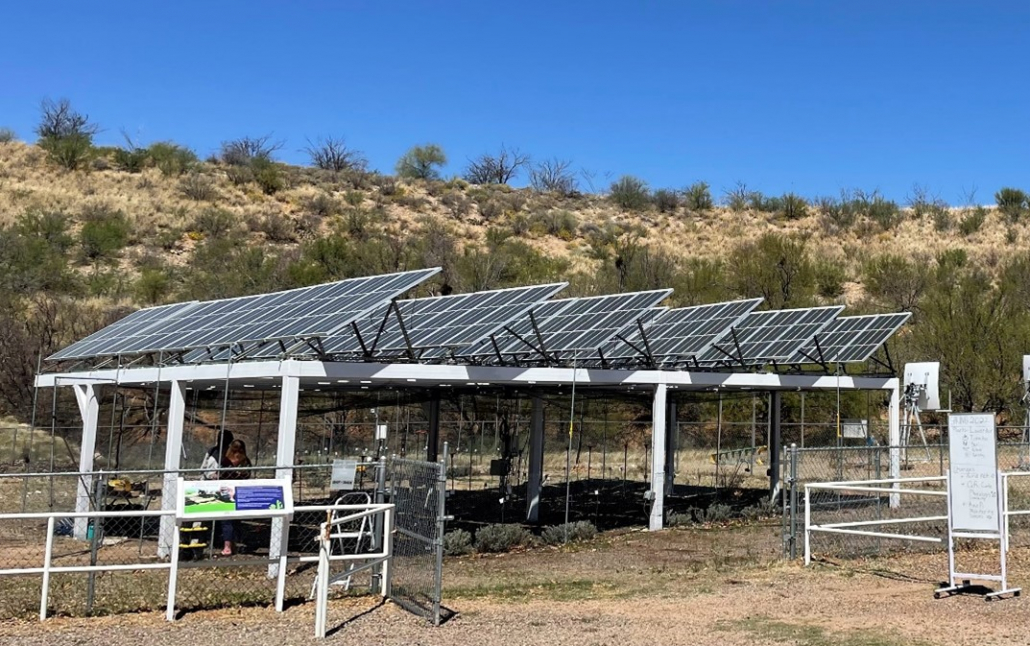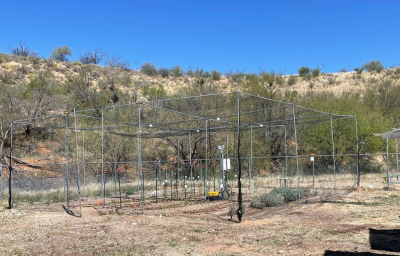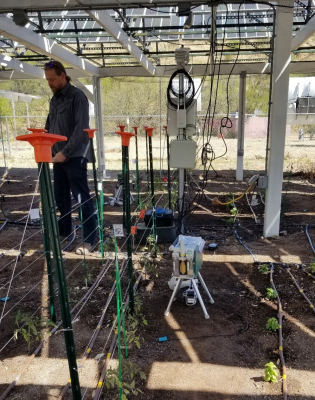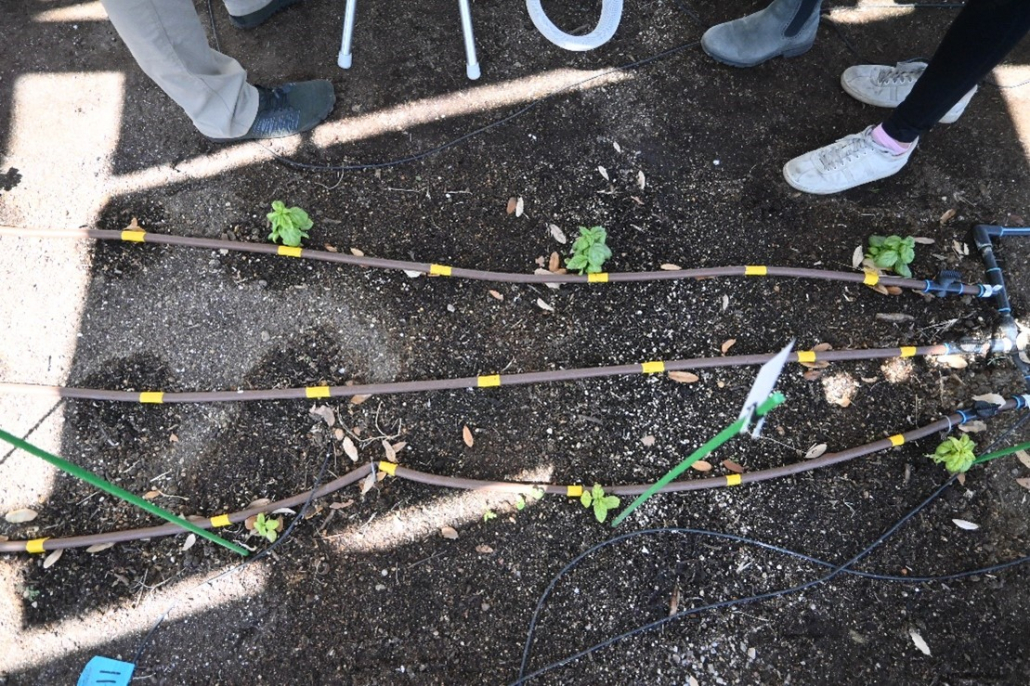Agrisolar is the co-location of agriculture and solar energy in a landscape. This guide covers the state-of-the-art best practices for growing crops, grazing, beekeeping, and creating pollinator habitat under and around solar arrays. A chief strength of the AgriSolar Clearinghouse is our partner network, and, in this guide, the AgriSolar Clearinghouse team has gathered the country’s leading voices in co-location.
Tag Archive for: solar crops
Agrivoltaic systems emerge as a promising solution to the ongoing conflict between allocating agricultural land for food production and establishing solar parks. This field experiment, conducted during the spring and summer seasons of 2023, aims to showcase barley production in a vertical agrivoltaic system compared to open-field reference conditions at Kärrbo Prästgård, near Västerås, Sweden.
By Stacie Peterson, PhD, NCAT; and Heidi Kolbeck-Urlacher, Center for Rural Affairs
March 2024
Agrisolar practices, also called agrivoltaics, are the co-location of agriculture and solar within the landscape. They include solar co-located with crops, grazing, beekeeping, pollinator habitat, aquaculture, and farm or dairy processing. Agrisolar practices offer an opportunity to allow solar and agriculture to co-exist while meeting demands for clean energy and resilient rural infrastructure. One agrisolar approach is crop production under and adjacent to solar photovoltaics. Farms and research sites across the country demonstrate agrisolar as an opportunity to diversify farm revenue, decrease crop irrigation, increase crop yield, increase soil moisture, improve solar panel efficiency, and increase rural energy independence (Barron-Gafford, 2019; MacKnick, 2022; and Adeh, 2019).
Extreme heat and weather events from climate change, including the long-term drought in the American west, have led to water shortages, decreased crop yields, and increased heat stress for farm workers. Climate projections show this trend continuing, resulting in a marked decrease in crop yield in the future (Hsiagn, 2017). At the same time, an increasing population has elevated the need for nutritious local foods and food sovereignty.
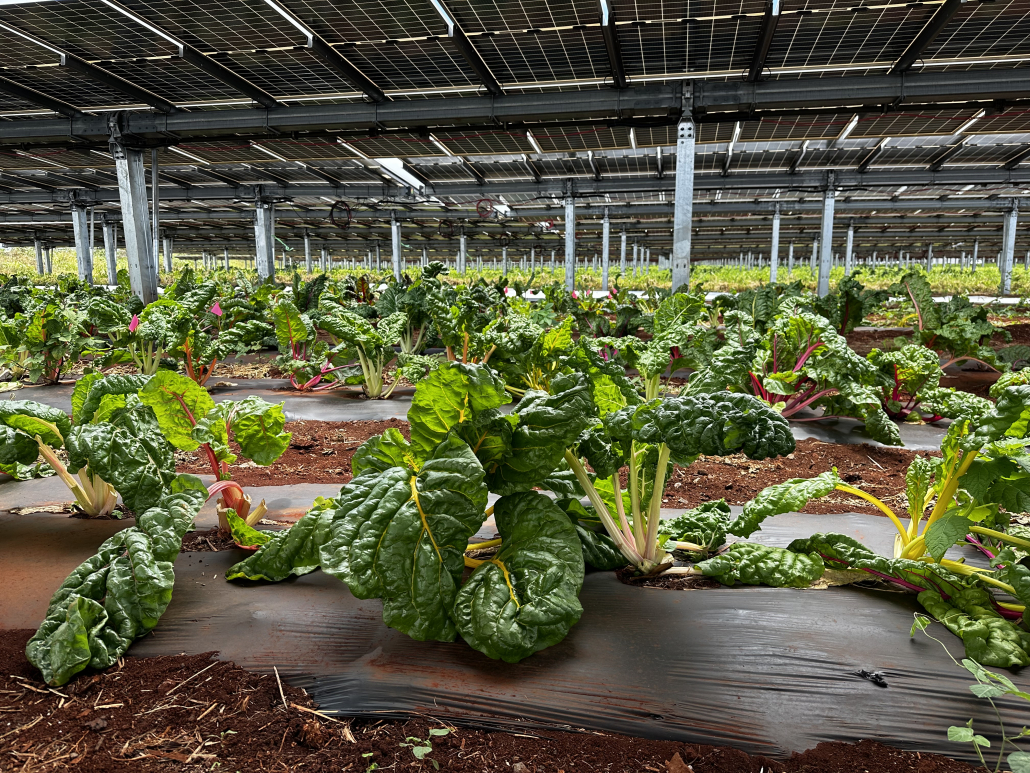
Crops growing under solar panels at the Hawai’i Agriculture Research Center.
By Anna Richmond-Mueller, NCAT Energy Analyst
In Mililani, Hawai’i, a one-acre agrivoltaic research and development site run by the Hawai’i Agriculture Research Center (HARC) is working to grow fruits and vegetables for their community, while also discovering which crops grow best locally in an agrivoltaic setting. This agrisolar project is just one of many ways HARC has been working to foster and improve agribusiness in Hawai’i for over 125 years. The overarching goal of the project is to determine how to develop novel agricultural production systems for replication at commercial scale, while simultaneously increasing the productivity and profitability of agrivoltaic sites in Hawai’i.
Nestled within a larger 230-acre solar system consisting of bifacial auto-tracking panels, the site is a collaboration between HARC, Longroad Energy, AES Corporation, and Clearway Energy Group, which owns the array. HARC researchers believe that agrivoltaic projects require research and development in the local environment to determine optimal infrastructure design, crop selection, and agronomic practices. With this in mind, agricultural construction and environmental monitoring began on-site in 2021.
By June 2022, preparation for the first planting of crops underneath the panels began. Researchers treated the area for weeds, disked compost into the soil, and installed four lines of dripline irrigation in each raised bed. A total of eight 180-foot beds were constructed, containing 14 different crops for initial trialing: radish, daikon, melons, kabocha squash, broccoli, cauliflower, bush beans, eggplant, poha berries, bunching onion, lavender, strawberries, sweet potato, and dryland taro. While most of the plants were successfully cultivated, researchers considered the 2022 growing season to be a screening process that allowed them to choose which crops they will plant on a larger scale in the coming years.
In addition to the in-ground plantings, hydroponic lettuce trials were also conducted in four commercial-scale troughs between the rows of solar panels. Five lettuce varieties were chosen based on what is most popular in commercial markets in Hawai’i . By December 2022, eight cycles had been harvested and yield data collected for detailed analysis as part of an ongoing graduate school thesis project at the University of Hawai’i .
Agrivoltaic projects like this have the potential to help meet both energy and food production needs for the state, while simultaneously optimizing land resources. HARC has successfully demonstrated that agricultural activities can be conducted on solar sites with minimal impact to existing operations and will hopefully expand their research beyond a single acre plot in the coming years.
Photo courtesy of Hawai’i Agriculture Research Center.
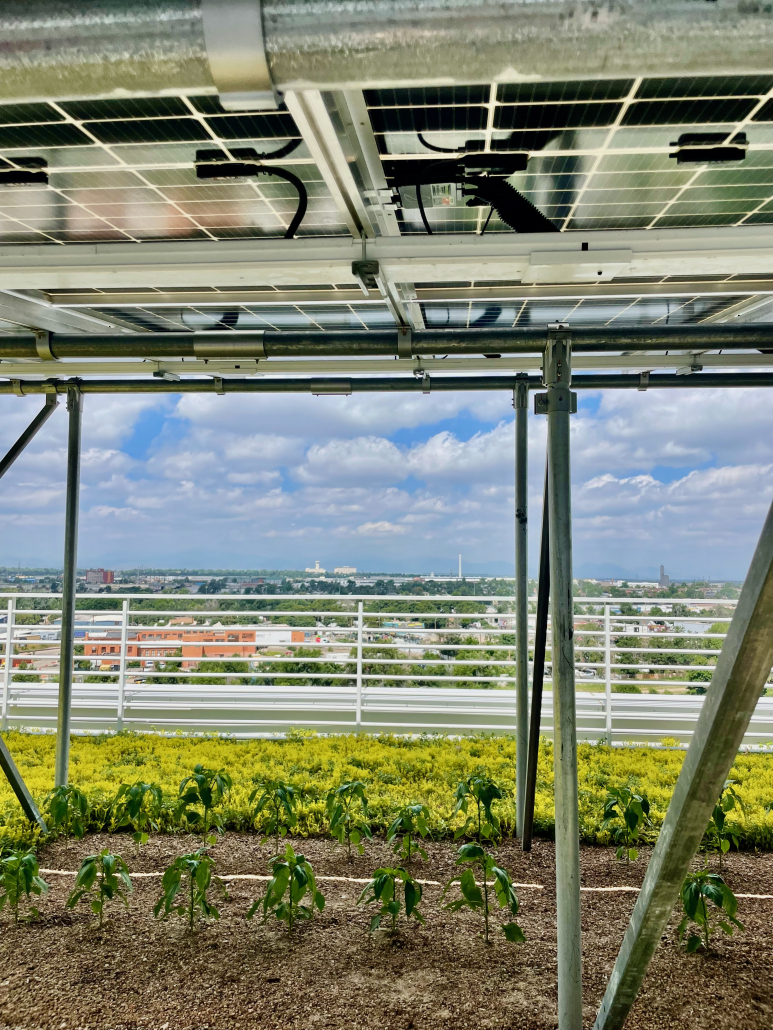
A variety of chile pepper plants grow under solar panels on the roof of Colorado State University Spur campus.
Written for the AgriSolar Clearinghouse by Allison Jackson, Colorado Agrivoltaic Learning Center
Sitting atop the brand-new Hydro Building at Colorado State University’s Spur campus is one of the world’s first agrivoltaic rooftops. The 46-kW array is a southeast-facing fixed array. Half of the array has monofacial monocrystalline panels, while the other half has bifacial panels. The roof’s infrastructure was completed in April of 2023 followed by crop planting later that month. Dr. Jennifer Bousselot is an assistant professor of Horticulture and Landscape Architecture at Colorado State University and the lead researcher for the rooftop agrivoltaics site. There are a variety of experimental plots planted under each panel type, along with a control plot in the open sun, which includes performance experiments on chile peppers, medicinal herbs, leafy greens, and sown meadow plots.
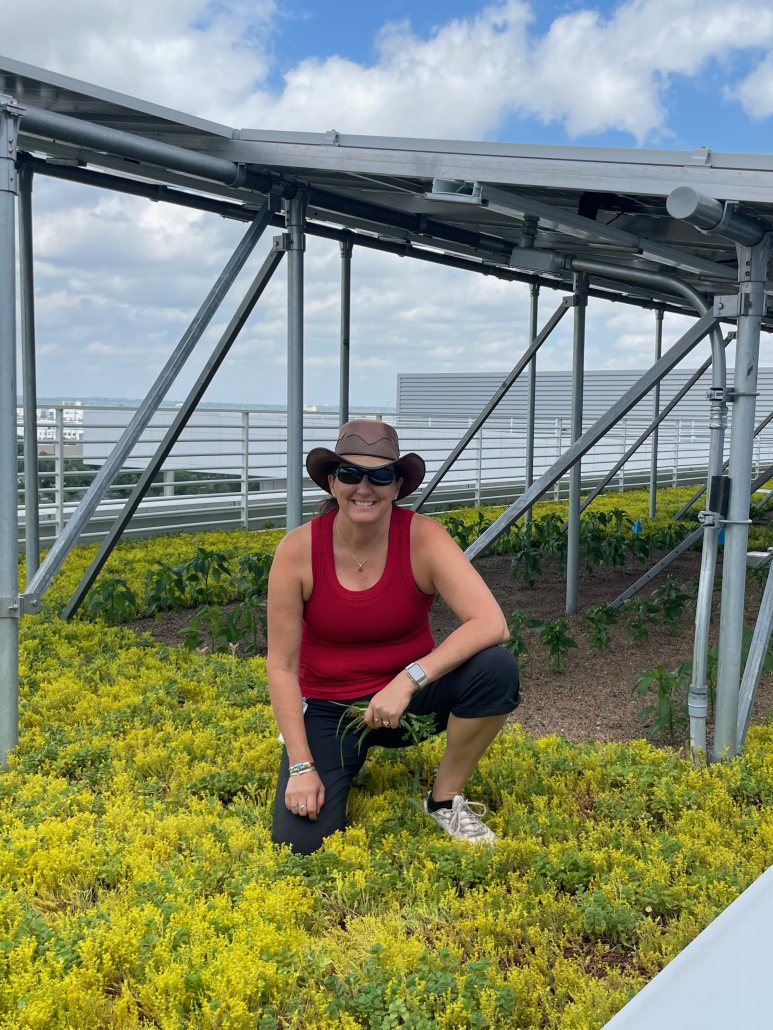
Dr. Jennifer Bouselot showcasing the sown meadow garden on the CSU:Spur Terra building.
Being situated on a rooftop comes with even more challenges than a typical agrivoltaic site. The wind loads on a roof make it challenging to install a tracking system, and the solar array requires membrane penetrations at every post or a ballast system under the soil substrate to ensure that the panels are secure. Irrigation is also trickier as green roofs have a well-drained substrate. This makes drip irrigation ineffective as water moves too quickly through the substrate profile for roots to absorb the water. The costs to locate agrivoltaics systems on rooftops is substantially increased due to higher engineering costs and the difficulties of moving and installing all the materials high in the air.
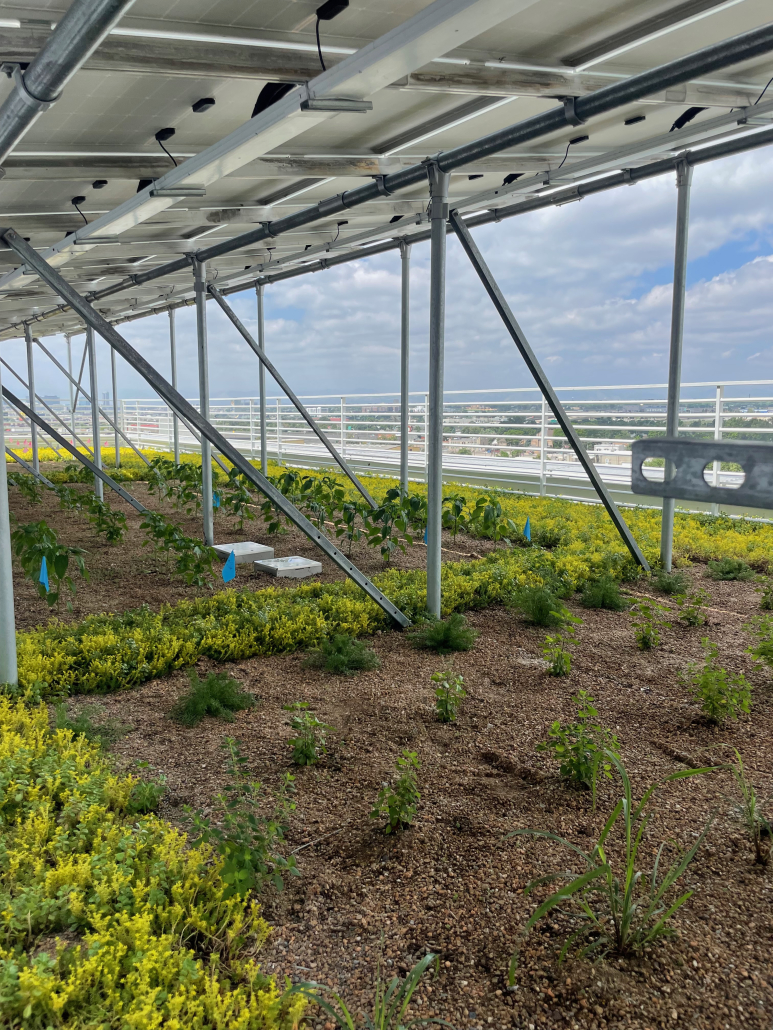
Medicinal herb and chile pepper experimental plots under the monofacial solar panels.
It is obviously early days for this agrivoltaics site, but some differences were already evident. Based on measurements, available light was higher under the monofacial panels than under the bifacial panels. In the chile pepper experiment, the agrivoltaic plants had reduction in chlorophyll concentration (due to less light), but also a reduction in stomatal conductance (a proxy for water use). The chile pepper plant height was also affected; the plants were up to 5 cm shorter in the open sun as compared to under the panels. The same also held true for the leafy green experiment, —the leafy greens (like kale, chard, arugula, spinach, and lettuce) under the solar panels were larger as compared to the full sun. The plants in the shade reached higher and created larger leaves to collect the necessary amount of sunlight.
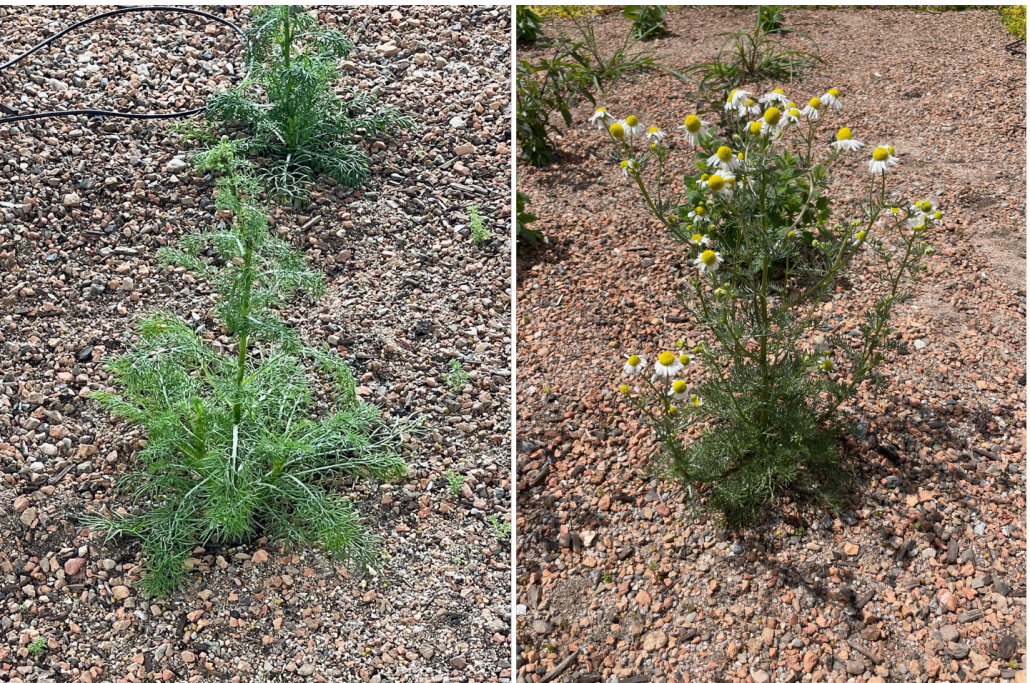
Chamomile plants in agrivoltaics system (left) versus full sun application (right).
The flowering of the medicinal herb plants seemed to be delayed for the agrivoltaic plants as opposed to the full sun plants, as seen in the photo above. On the positive side, the pigment content (a measure of potency) of the herbs was slightly higher in the agrivoltaic plants. It is only partially through the first growing season, with still more data collection to be completed, but it is interesting to note some of the early results.
Incorporating agrivoltaics on rooftops presents an innovative synergy of renewable energy and sustainable agriculture. These sites can make urban spaces not just consumers of resources, but also active contributors to both energy and agricultural production. By harnessing the power of the sun through solar panels while simultaneously cultivating edible and useful plants, this innovative approach can maximize land utilization, reduce urban heat island effects, and foster local food production.
Photos courtesy of Allison Jackson, Colorado Agrivoltaic Learning Center.
By Anna Richmond-Mueller, NCAT Energy Analyst
When it comes to conversations surrounding energy and water use in the modern world, the agricultural industry’s consumption of both is often at the forefront. As the world’s population continues to grow, humanity is tasked with the challenge of finding ways to meet both food and energy demands across the globe. “I really believe that greenhouse growing is the epitome of sustainable agriculture,” says Soliculture cofounder and CEO Dr. Glenn Alers. Whether it is the ability to greatly increase crop yields when compared to traditional open field growing, or the potential for increased water-use efficiency in combination with hydroponics, greenhouses could play a key role in addressing these concerns. Solar greenhouses also could also play a role in mitigating future energy crises.
Soliculture began in 2012 as a startup in the Physics Department at the University of California Santa Cruz. Dr. Alers and his cofounder were conducting research on luminescent solar concentrator panels when he realized the technology’s agricultural potential. Luminescent solar panels utilize a luminescent dye that selectively absorbs a portion of the solar spectrum and readmits light at a different wavelength. The dye used in Soliculture panels absorbs the green portion of sunlight with low photosynthesis efficiency and converts it to red light with much higher photosynthesis efficiency. The panels enhance the light quality inside a greenhouse by optimizing the light spectrum for improved plant growth. Moreover, the panels contain bifacial cells that collect the light reflected from the crops planted below them. The red luminescent dye also enhances the power output of embedded cells by 15 to 32%, compared to a conventional panel.
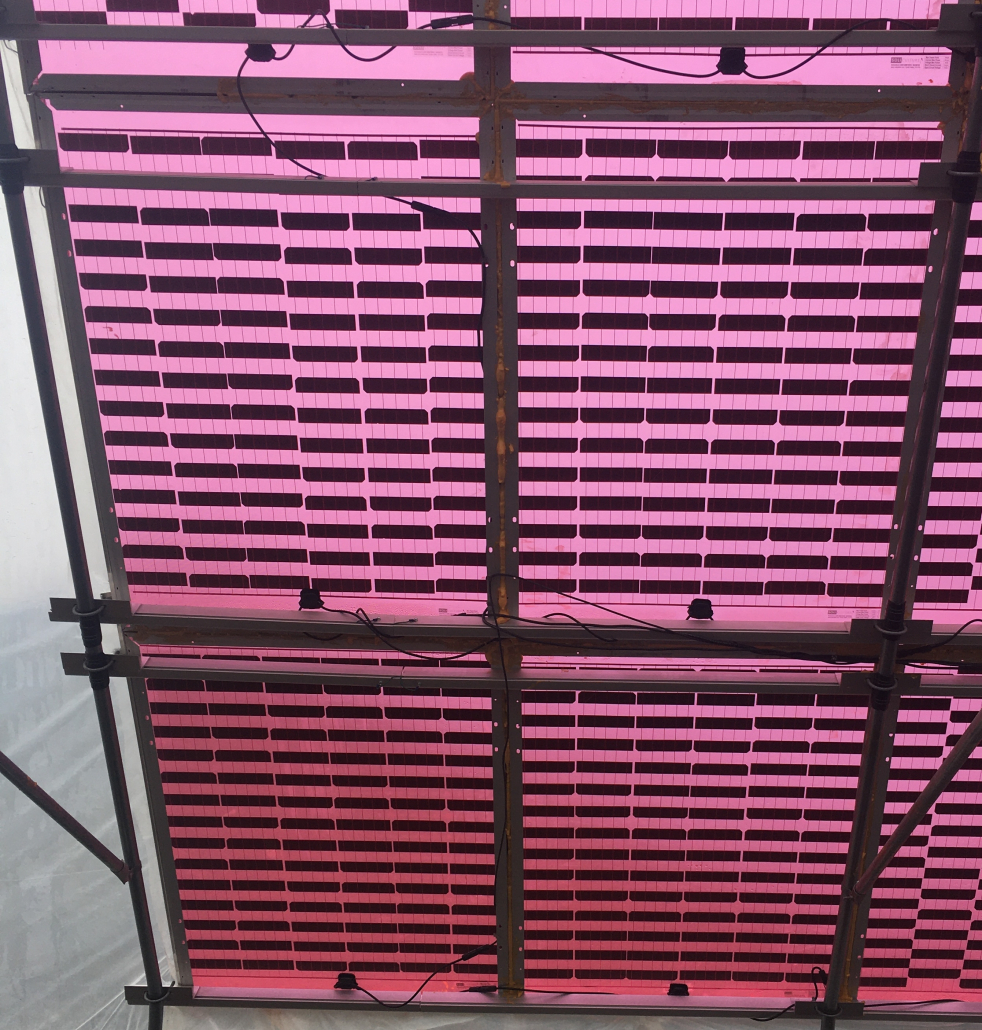
In 2019, Soliculture began a research project on Whiskey Hill Farms in Watsonville, California, aimed at developing these solar panels for use on hybrid high-tunnel greenhouses. As an active organic farm already growing produce in both field and greenhouse settings, Whiskey Hill Farms served as an ideal host for the project. The Soliculture research greenhouse was constructed from the ground up with help from a local high tunnel installer, measuring 120’ long and 25’ wide upon completion. Additional bracing was added to the roof structure, forming a “queen style” truss to support the weight of the panels. One half of the high tunnel was covered by a semi-clear plastic film that served as the control for the upcoming crop growth study, and the other was covered by Soliculture solar panels. These panels were specially designed for high tunnel greenhouses and had a cell coverage of 42%.
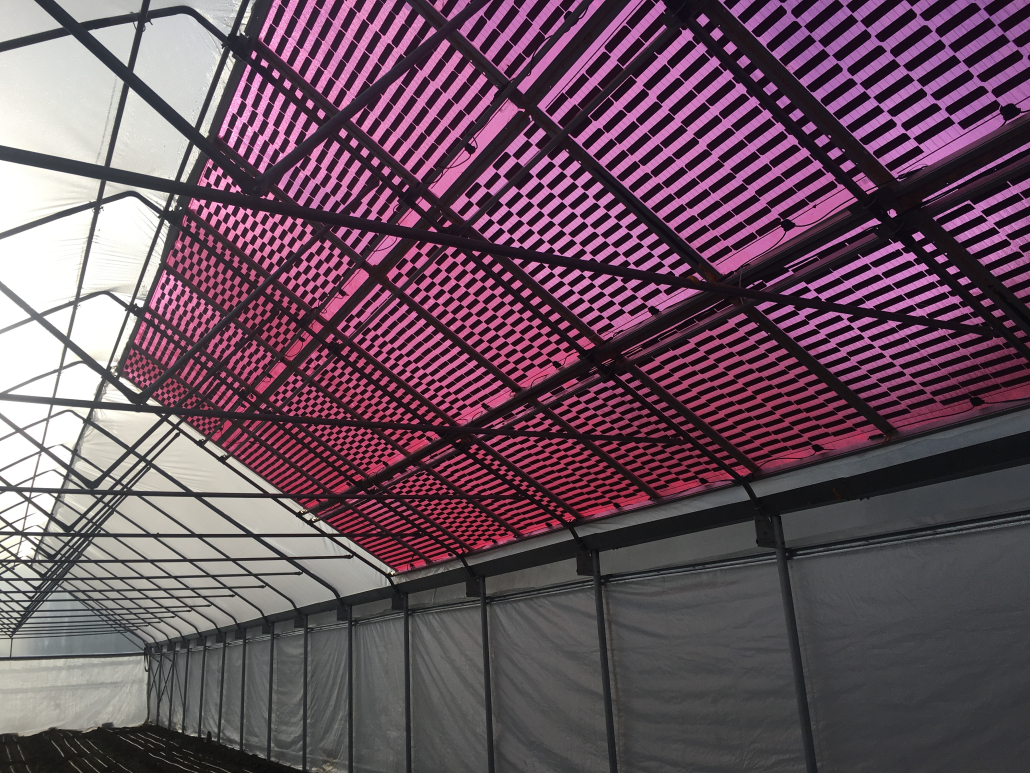
The project hit a temporary snag when waterproofing the panel racking system proved to be more of a challenge than expected. At first, horizontal mounting bars were attached to the tubing of the greenhouse’s roof frame and foam weather stripping was installed between the panels to create a watertight seal. Water was still able to leak through at the corners and where the mounting bolts connected the panels to the roof. Knowing the potential for these leaks to cause erosion and negatively impact crop growth, the Soliculture team returned to their laboratory and created a modified racking system specifically for high tunnel application. This new system used mounting brackets that attached to the bottom of the frame and utilized a rubber “T” gasket inserted between the panels to create a seal. Finally, the plastic film portion of the roof was attached to the panels using an aluminum channel screwed into the panel frame and “wiggle wire” to hold the plastic film in position. With a waterproof roof in place, the crop trail was ready to commence.
The following crops were selected for planting following the completion of the high tunnel in mid-November: strawberries, red romaine lettuce, red butter head lettuce, cilantro, mustard greens, and turmeric. To ensure the trial’s results would translate to commercial production, the research team used common commercial growing methods throughout the duration of the trial. These methods included drip irrigation with untreated well water, sand filtration, and liquid organic fertigation. By the end of the trial, the majority of the crops grown under Soliculture panels matured close to two weeks ahead of those grown under the clear film portion of the high tunnel. The fresh weight for the under-panel crops was superior as well, with red butter head lettuce seeing the greatest benefit at 145% higher weight. Mustard greens weighed in at 95% higher, cilantro at 35%, romaine lettuce at 32%, and turmeric at 25%. The strawberry fruit showed no statistically significant difference in fresh weight, but the single 5’ by 120’ planted bed yielded more than 350 pounds of fruit by the end of July.
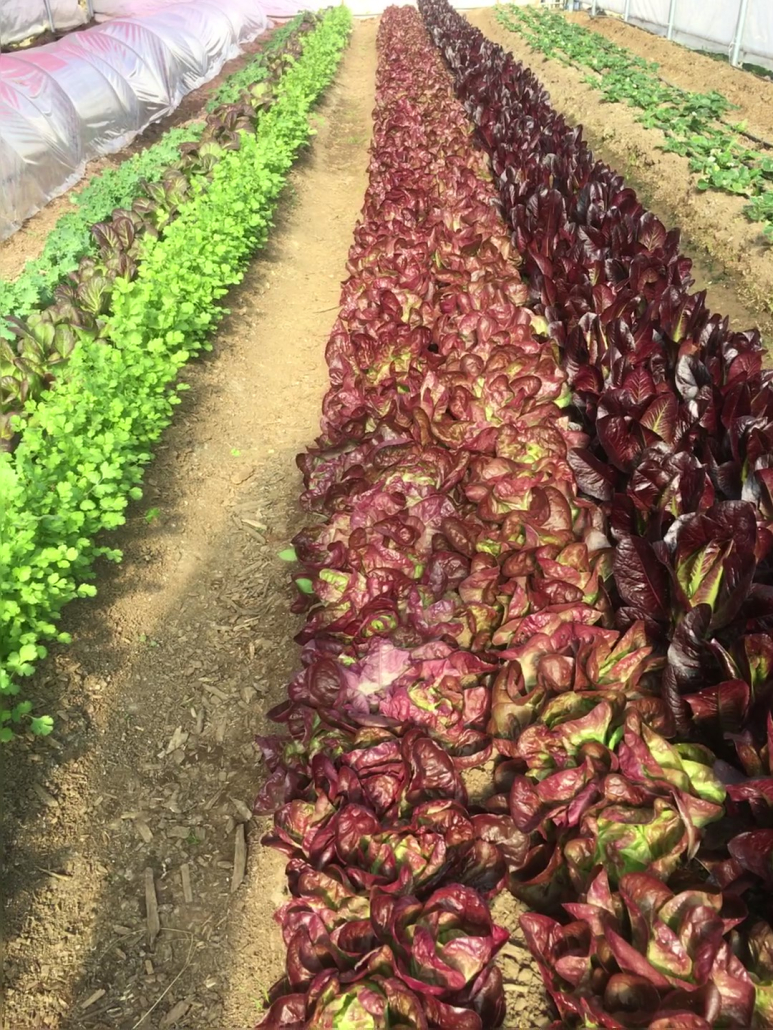
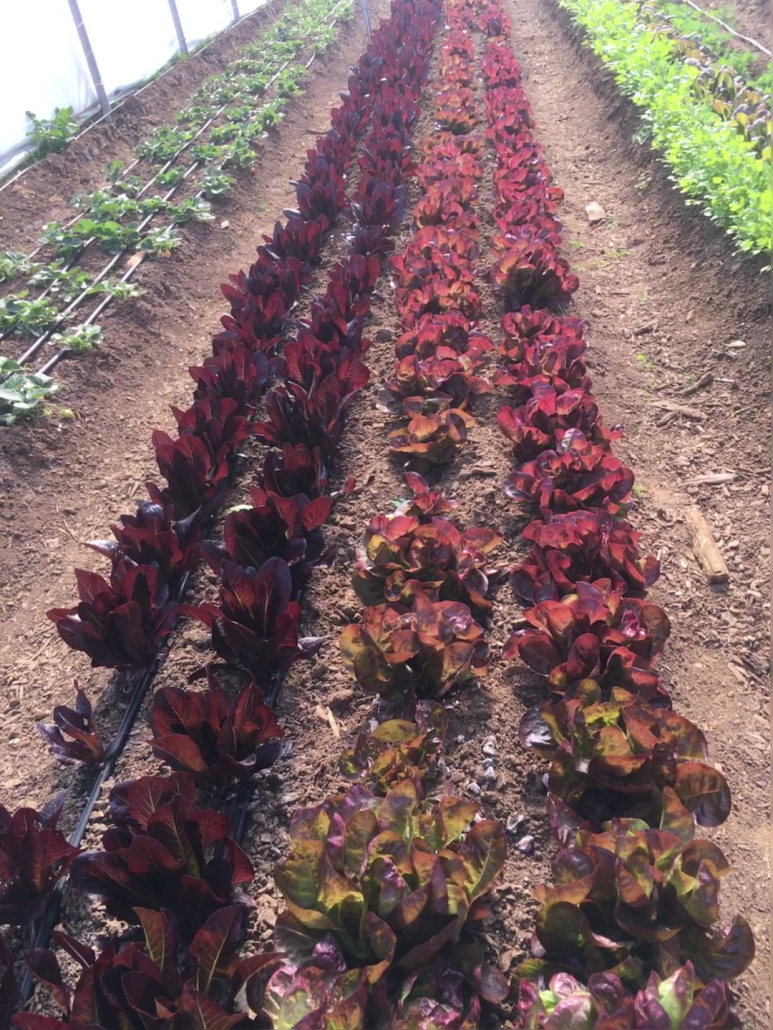
On top of the very successful crop trial, the power generated by the greenhouse panels was used by Whiskey Hill Farms to power their day-to-day operations. A total of 58 Soliculture panels provided the farm with a 6kW system, which was connected to an inverter. The AC power was then fed back into the farm’s power system, a testament to how greenhouse solar can benefit the farm beyond improving plant growth.
The field of agrivoltaics is constantly evolving, with numerous researchers and farmers searching for the ideal nexus between the agricultural industry and energy production. Soliculture’s contributions to agrivoltaics is important for farmers who have reservations about growing food underneath and around solar panels. “We haven’t seen any negative effect on plant growth,” Dr. Alers says, referring to the Whiskey Hill Farms project and several other successful Soliculture installations across the United States and Canada. Greenhouse production has always had the potential to help alleviate the water crisis and increase the amount of food grown per acre, but Soliculture’s technology is giving it a bright future in energy production, as well.
All photos courtesy of Soliculture
Biosphere 2, located in Oracle, Arizona, houses one of the first agrivoltaic research sites in the United States. The site was built seven years ago with a 21.6-kW solar PV array shading a 9×18-meter garden. Greg Barron-Gafford, along with several graduate students, use this garden to study the changes in phenology of several varieties of vegetables and fruit, soil health, panel production, water consumption, and carbon scrubbing that are affected by the shading of the solar array. A control area of the same size with no shading was built within 10 feet of the solar garden for comparison. The fruits and vegetables grown here are tomatoes, caribe potatoes, butternut squash, red beans, bok choy, and basil.

Harvested food grown in the solar garden at Biosphere 2. Photo: Mariah Rogers, University of Arizona
Phenology, the study of the relationship between climate and plant life production and health, is a main focus at Biosphere 2. Graduate students are studying the timing of fruiting and/or flowering, along with plants’ dying cycle, at the solar garden and comparing these results to the full-sun control site. They are currently working with the National Phenology Network to share and analyze data. Soil health is also monitored by testing the amount of carbon in the soil. This is a slower process, as it takes time for carbon, microbes, and other organics to develop in dryland areas such as Arizona.
The students test the greenhouse gas consumption or carbon-scrubbing abilities of the plants as the conditions change. They track photosynthesis of the plants grown beneath the panels versus those grown in the control area to see when and for how long photosynthesis is affected by the hot climate and the shade. Plants’ ability to carbon scrub decreases in hot conditions, which in turn affects their health and growth patterns. This research is showing that plants can maximize their ability to carbon scrub under the solar panels due to the shading and reduced heat seen in dryland agriculture.
The watering-treatment experiment tests the health and production of plants using two watering methods. Half of the plants are on a watering schedule based on what the plants in the control site need to flourish. The other half of test plants are watered half the time, therefore receiving half the water. Both watering schedules are used in the solar garden and control garden for comparison. These experiments are proving that shaded growing areas in dryland agriculture can use less irrigation water to grow crops if planted under a solar array.
Recently, these plants went through a blind taste test to see if there is any taste difference between the fruits and vegetables grown under solar versus under full sun. The main plants tested were tomatoes, beans, squash, and basil. Each plant group was harvested from both the control site and the solar site on the same day, washed the same, and presented the same. The study found that no significant taste difference was observed—good news for farmers worried about a change in flavor for their crops.
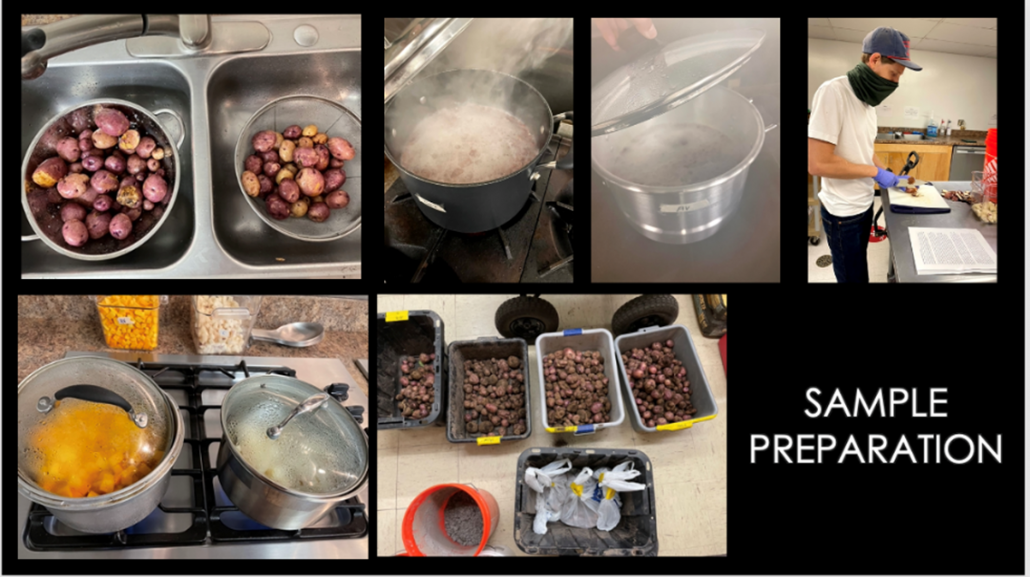
Sample preparation for the solar garden grown taste tests. Photo: Mariah Rogers, University of Arizona
The solar panel temperatures are being tested using thermocouples taped to the underside of the panels. Electricity flows easier in cooler conditions; thus, solar panels produce best when the underside of the panel stays under 75-80oF. The garden below creates a cooler environment for the panels than arrays with a gravel layout.
Graduate students are also testing a remote sensing system at the solar site using satellite imaging and remote monitoring to learn whether remote sensors and monitoring are effective in site monitoring. This technology will hopefully help with site monitoring from a distance when travelling is not an option.
Greg Barron-Gafford and his team of graduate students are making leaps and bounds in agrivoltaic farming research. They hope to educate farmers across dryland agriculture and beyond on the double benefits of growing under solar panels while also producing electricity. To learn more about this program please watch the video below and visit Greg’s website. https://www.barrongafford.org/agrivoltaics.html
This paper shows that agrivoltaic systems allow us to reach sustainable food and electricity goals with high land-use efficiency. The study shows the yield, antioxidant capacity, and secondary metabolite of broccoli and electricity production were analyzed under an agrivoltaic system over three cultivation periods. The study also reports that agrivoltaic with additional shading treatment produced greener broccoli with a higher level of consumer preference than open-field grown ones.

